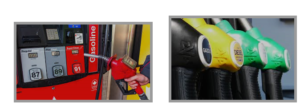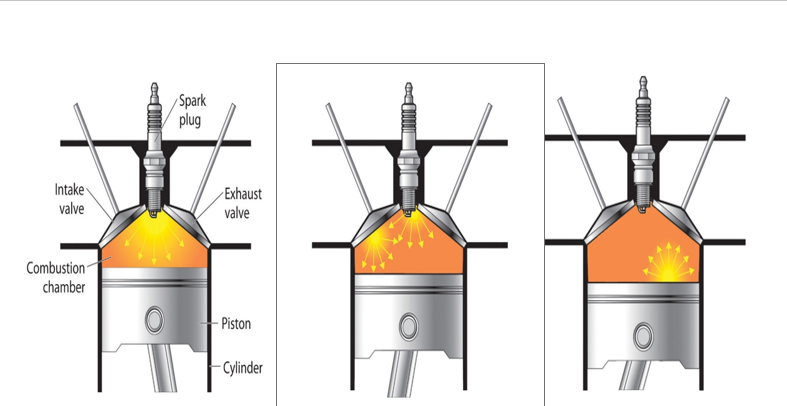Gasoline or petrol is a clear petroleum-derived flammable liquid that is used primarily as a fuel in most spark-ignited internal combustion engines. It consists mostly of organic compounds obtained by the fractional distillation of petroleum, enhanced with a variety of additives. On average, a 160-liter barrel of crude oil can yield up to about 72 liters (19 U.S. gallons) of gasoline after processing in an oil refinery, depending on the crude oil assay and on what other refined products are also extracted. The characteristic of a particular gasoline blend to resist igniting too early (which causes knocking and reduces efficiency in reciprocating engines) is measured by its octane rating, which is produced in several grades. Once widely used to increase octane rating, tetraethyl lead and other lead compounds are no longer used in most areas. Other chemicals are frequently added to gasoline to improve chemical stability and performance characteristics, control corrosiveness and provide fuel system cleaning. Gasoline may contain oxygen-containing chemicals such as ethanol, MTBE or ETBE to improve combustion.

Gasoline Octane Number
In recent years, car manufacturers have been requiring or recommending premium gasoline (a high-octane grade of fuel) for use in more of their vehicle models. The difference in prices between premium and lower octane grades has also increased. As a result, more people are curious about what octane is and what those octane rating numbers on gas pumps mean.
Octane ratings are measures of fuel stability. These ratings are based on the pressure at which a fuel will spontaneously combust (auto-ignite) in a testing engine. The octane number is actually the simple average of two different octane rating methods—motor octane rating (MOR) and research octane rating (RON)—that differ primarily in the specifics of the operating conditions. The higher an octane number, the more stable the fuel. Retail gasoline stations in the United States sell three main grades of gasoline based on the octane level:
- Regular (the lowest octane fuel–generally 87)
- Midgrade (the middle range octane fuel–generally 89–90)
- Premium (the highest octane fuel–generally 91–94)
How does the octane level affect the vehicle?
Engines are designed to burn fuel in a controlled combustion. A flame starts at the spark plug and burns throughout the cylinder until all of the fuel in the cylinder is burned. In comparison, spontaneous combustion, also called auto-ignition, detonation, or knock, happens when rising temperature and pressure from the primary combustion causes unburned fuel to ignite. This uncontrolled secondary combustion causes pressure in the cylinder to spike and causes the knock to occur.
The competition between the intended (controlled) and unintended (spontaneous) combustion causes the energy from the burning fuel to disperse unevenly, which can cause damage and place high pressure on the engine’s piston before it enters the power stroke (the part of the cycle when the piston’s motion is generating power).
Before electric computerized ignition was widely used, this knocking commonly occurred and could cause significant engine damage. Most modern engines have sensors to detect knocking. When detected, the computer delays the initial spark, which causes the controlled combustion to take place at a point when compression is not at its highest point. Although this eliminates the knock, it can cause the engine to run less efficiently.

A similar undesirable condition is called pre-ignition, when the fuel ignites on its own before the spark ignites it. Modern engine computers minimize this condition by controlling the timing of valves and fuel injection; however, this control mechanism can also come with a fuel-efficiency or emissions penalty.
Gamma Development Co. offers the most completive prices for this product. For receiving a quote please sends us your inquiry along with the LOI to our email : export (@) gamma-co (.) ir
